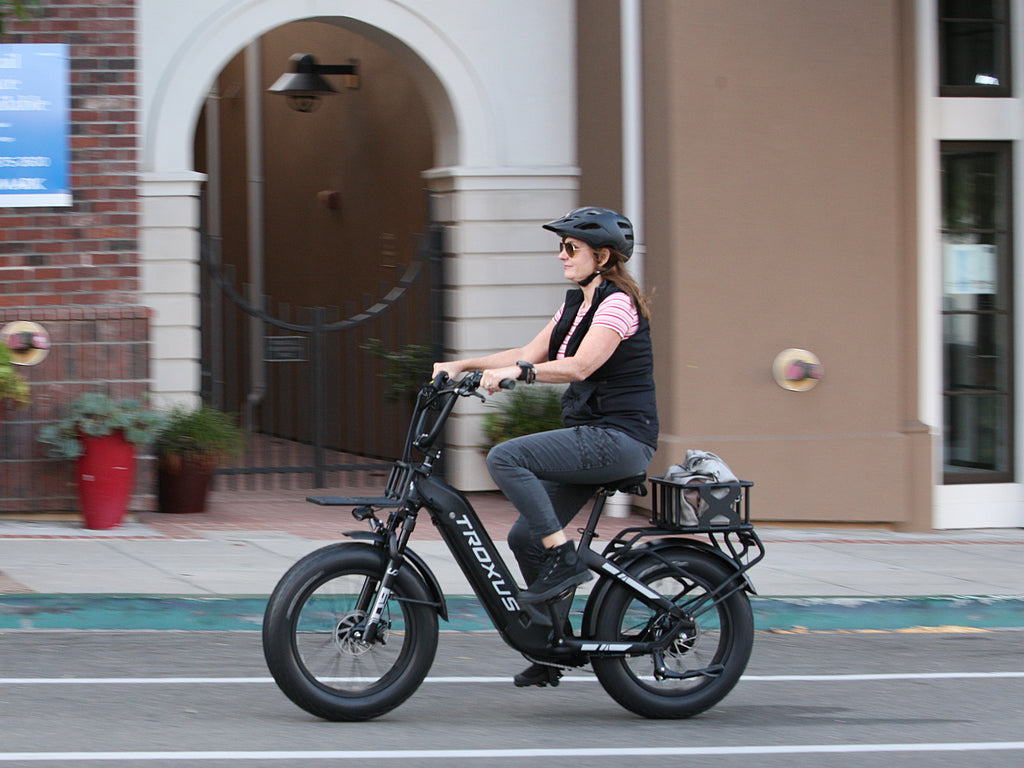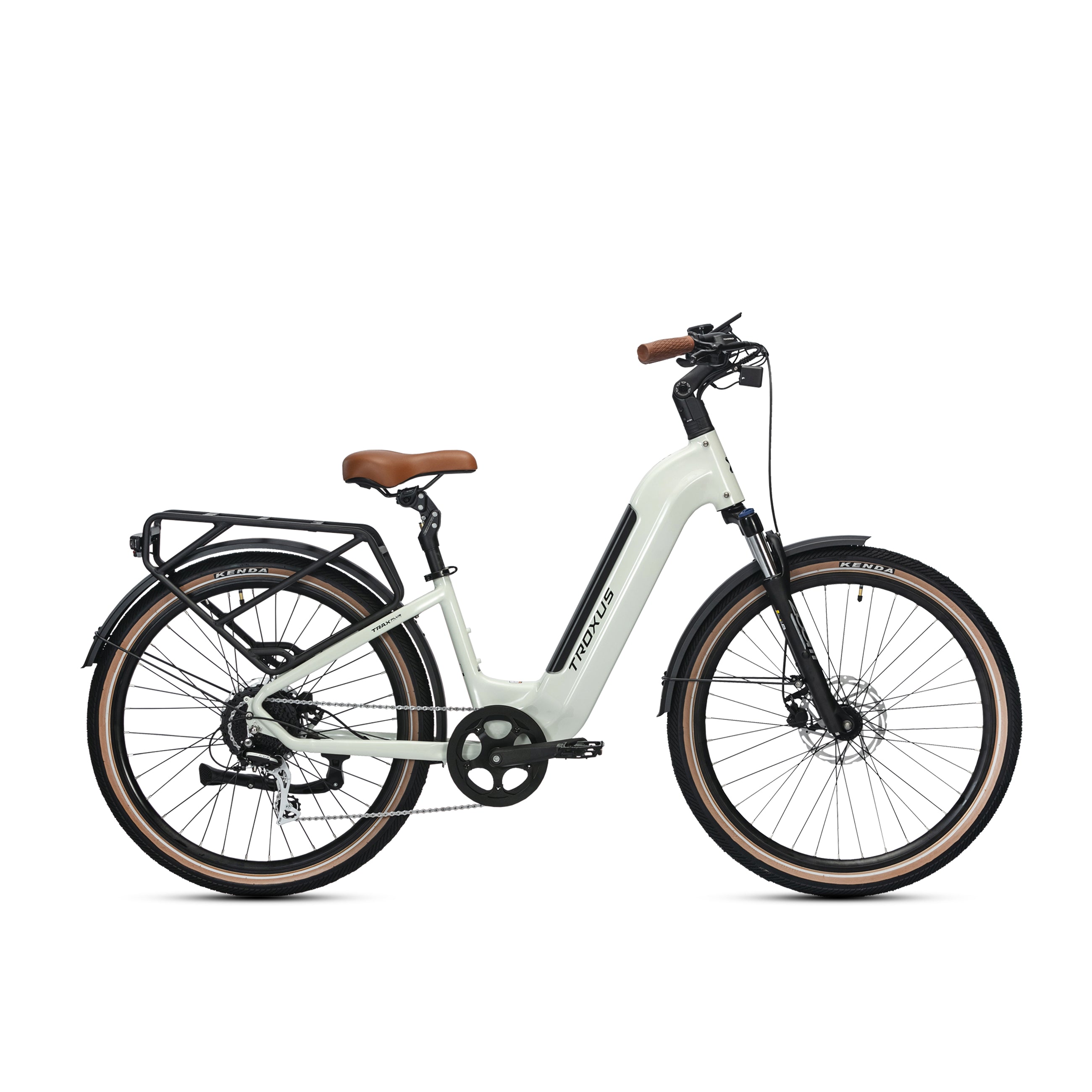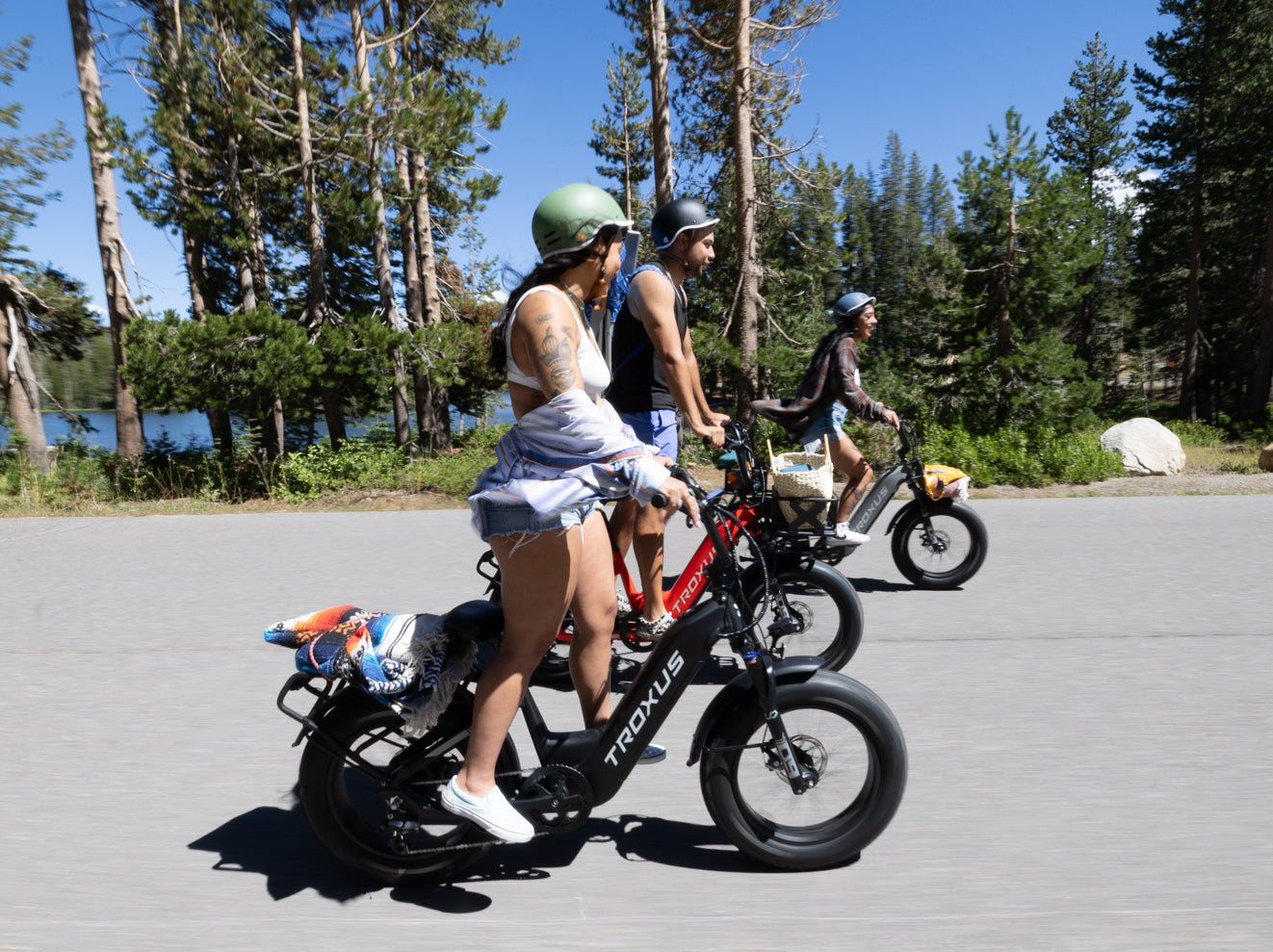The electric bike, short for electric bike, has revolutionized the world of cycling. With a rapid rise in popularity, electric bikes are not only environmentally friendly but also provide an thrilling way to commute, exercise, and travel. With the expanding market for electric bikes, choosing the right one can be a daunting process. Whether you're an urban worker looking to shorten your commute time, an enthusiastic lover of nature to handle trails with ease, a tech lover captivated by the newest innovations, finding the perfect electric bike for your needs is crucial.
Discover the ultimate guide that will steer you through essential factors, thorough classifications of electric bike models, and expert tips on test rides and maintenance for your electric partner. At the finish line, you'll be equipped with the insights to choose the perfect electric bike to elevate your lifestyle.
Content
What is the best electric bike for you?
What types of electric bikes are there?
Factors to Consider When Choosing an Electric Bike
Other Key Electric Bike Features
How to Test and Choose the Right Electric Bike
Maintenance and Care Tips for Electric Bikes
Conclusion: Riding Towards Your Ideal Electric Bike
What is the Best Electric Bike for You?
To determine the ideal range for your commute, consider factors like distance, terrain, and whether you'll be using pedal-assist or full throttle. Search for electric bikes with a battery capacity that can handle your daily commute and extra trips throughout the day. Continue reading the article as we guide you through all the factors you need to consider.
Electric Bike Classifications
Before you even start browsing electric bike models, understanding that all electric bikes are not equal is crucial. Electric bikes are categorized into classes based on how the motor provides assistance, this, in turn, affects the locations where you can legally ride. We can generally differentiate electric bikes into three classes:
Class 1: Pedal Assist (PAS)
Class 1 electric bikes are pedal-assist only, with no throttle, and have a maximum assisted speed of 20 mph, featured a motor that assists the rider exclusively during pedaling. They are favored by individuals seeking a workout or those seeking a modest enhancement during their commute.
Class 2: Throttle
Class 2 electric bikes also have a maximum speed of 20 mph, but are throttle-assisted. The motor assistance stops at 20 mph with no need to pedal, making them ideal for individuals seeking a break from pedaling but don't need the full power of a motorcycle.
Class 3: Speed Pedelec
Class 3 electric bikes, also known as "Speed Pedelecs", are pedal-assist only, with no throttle, and a maximum assisted speed of 28 mph. Ideal for commuters valuing speed, especially on longer distances where the added boost can save substantial time and energy.
What Types of Electric Bikes are There?
While the market offers a variety of electric bike models to suit diverse preferences and needs, some of the most popular types include commuter electric bikes, mountain electric bikes, folding electric bikes, and cargo electric bikes. Each type provides for to specific riding styles and terrain, providing options for riders seeking convenience, off-road adventures, portability, or heavy-duty transportation solutions.
1. Commuter Electric Bike
Perfect for your everyday journeys and tasks, commuter electric bikes emphasize the comfort and practicality of the rider. Their ergonomic design allows for extended rides, while the impressive battery range covers long distances effortlessly. Equipped with fenders, lights, and racks, these electric bikes ensure a convenient and efficient commuting experience.
2. Mountain Electric Bike
These electric bikes are carefully crafted for thrilling off-road escapades, boasting top-notch features such as advanced suspension systems for a smoother ride, wider tires for enhanced traction on rugged paths, and increased battery capacities for extended adventures. With their power-boosting capabilities on uphill climbs, these electric bikes redefine the off-road experience, making the adventure of navigating challenging landscapes more exhilarating and accessible than ever before.
3. Road Electric Bike
Similar to traditional road bikes, these electric bikes have a sleek and lightweight design specifically crafted for fast and efficient navigation on smooth asphalt surfaces. With their streamlined frames and electrically powered assistance, they provide a seamless blend of speed and comfort. Electric bikes typically offer pedal-assist only, catering to fitness enthusiasts looking for an engaging workout with the added advantage of electric support.
4. Folding Electric Bike
Ideal for individuals facing constraints in storage limitations or in search of a portable solution, folding electric bikes offer the flexibility of easy folding and storage in narrow spaces. Their versatility extends to seamless integration with public transportation systems, fostering a seamless combination of commuting choices between cycling and utilizing mass transit.
5. Cargo Electric Bike
Cargo electric bikes are specially crafted bicycles tailored to handle substantial loads, making them an excellent choice for those in need of transporting groceries, sports equipment, or little ones. These electric bikes feature larger frames engineered for stability, robust racks for secure cargo storage, and high-powered motors adept at effortlessly handling extra weight. Their versatility and practical design address a diverse array of needs, providing a dependable and effective solution for a variety of transportation needs.

Factors to Consider When Choosing an Electric Bike
Apart from the model itself, there are multiple critical factors you need to consider when selecting the right electric bike tailored to suit your lifestyle and needs. These factors can significantly influence your satisfaction overall with your electric bike purchase.
Range and Battery Capacity
An electric bike's range indicates the distance it can cover with one charge, affected by motor efficiency, battery size, rider weight, and terrain conditions. For extended rides, explore electric bikes with larger batteries or the option to utilize dual batteries. Evaluate your typical cycling distances to guarantee the electric bike can reliably cover those distances.
Motor Power and Assist Levels
Motor power plays a vital role in influencing the performance of electric bikes. While high-power motors enhance hill-climbing and acceleration, but at the cost of rapid battery drainage. The assistance level, adjustable on specific electric bikes, also impacts battery longevity. Select a motor and assistance level that align with your riding preferences and requirements.
Electronic Control System
An electric bike's electronic control system serves as the central hub that seamlessly integrates the motor, battery, and sensors. This system can include anything from basic LED displays to sophisticated LCDs. Cutting-edge electric bikes are likely to offer connectivity options, such as Bluetooth, allowing riders to track their rides, monitor battery levels, adjust assistance settings, and even secure their bikes through theft-deterrent alarms or GPS tracking systems, all conveniently managed from their smartphones.
Frame and Design Options
The design and construction of an electric bike play an important role in comfort, versatility, and control. Various frame types, including step-over and step-thru designs with different wheel sizes, cater to a wider range of customers. It's also essential to assess the materials and build quality; a sturdy frame can significantly prolong your electric bike's lifespan.
Budget Considerations
When searching for an electric bike, your budget serves as a pivotal beginning. Prices vary greatly, ranging from a few hundred dollars to several thousand considering the brand, model, and features. While opting for the most feature-rich choice may be appealing, It is vital to evaluate both affordability and the essential features required. Consider the electric bike's long-term value and the return on your investment.
Other Key Electric Bike Features
A well-equipped electric bike is beyond merely its frame and motor. Here are several additional features and components that can enhance your riding experience and customize your electric bike to suit your specific requirements.
Lighting
Good lighting is essential, particularly for riding in low-light situations. When choosing an electric bike, give preference to models with built-in lighting systems. These systems often feature bright front and rear lights powered directly from the electric bike's battery for both convenience and durability.
Integrated Accessories
Accessories like racks, fenders, and baskets can optimize your electric bike's functionality without sacrificing its style. Prioritize accessories you frequently use and opt for an electric bike that either comes with them or is easily compatible.
Smartphone Integration
Certain electric bikes come with smartphone applications that enable riders to monitor their ride, customize settings, and remotely secure their bike. This connectivity enhances convenience and functionality, especially appealing to tech-savvy cyclists.
Built-in Security
Bike theft poses a significant concern for owners. Integrated locks, alarms, and GPS tracking features offer reassurance and prevent theft. Choose security attributes that align with your storage and usage settings. By investing in the right security solutions that match needs, you can safeguard your bike and enjoy enhanced peace of mind.
Warranty and After-sales Support
A comprehensive warranty reflects a manufacturer's confidence in their electric bikes and provides assurance and confidence to consumers. Pay close attention to what the warranty covers, such as the motor, frame, and battery. Moreover, evaluate the manufacturer's reputation for after-sales support, including responsiveness and problem-solving capabilities, as responsive customer service can significantly enhance your long-term ownership experience.
How to Test and Choose the Right Electric Bike
Once you've narrowed down your selection, the best way to choose an electric bike is to test ride a few models that you' fancy. Here are some tips for maximizing your test ride experience:
Tips for Test Riding
-Research the specific models and features of the electric bikes you'll be testing and prepare a list of inquiries to ask the sales representative.
-Check that the electric bike you're testing is arranged as closely as possible to how you plan to use it, taking into account tire pressure and saddle height.
-Dress in the clothes and footwear you'll normally wear when riding.
-Test the electric bike across various terrains and scenarios that replicate your usual rides, such as inclines and traffic.
-Test the brakes and gears thoroughly for optimal functionality.
-Make sure the electric bike feels comfortable and optimal handling.
Making an Informed Decision
-Collect comprehensive information as possible about the electric bikes you have tried out.
-Consider the advice of the salesperson yet remember to put your own riding experience and preferences first.
-Considering the overall value of the electric bike, including the initial price, range, warranty, and accompanying accessories.
Maintenance and Care Tips for Electric Bikes
Purchasing an electric bike is just start of the journey. To ensure that your investment lasts, proper maintenance and care are essential, adhere to these fundamental guidelines:
Basic Maintenance Guidelines
-To maintain your electric bike's longevity, keep your electric bike clean and dry to prevent corrosion.
-Regularly inspect and tighten all bolts and connections regularly.
-Ensure that your tires are inflated to the proper pressure.
-Clean and lubricate your chain and drivetrain frequently.
-Inspect the brake pads and rims for significant wear.
Extending the Lifespan of Your Electric Bike
-Keep your electric bike stored in a dry place at moderate temperatures.
-Avoid overcharging your battery, and don't store it for long periods with a low charge.
-If you're not utilizing your electric bike frequently, charge the battery to 50% before storing.
-Consider maintenance services for professionals at regular intervals or at the initial indication of trouble.

Frequently Asked Questions
Do I need a license to ride an electric bike?
In most countries, riding an electric bike does not usually necessitate a license, as long as the electric bike adheres to specific speed and power restrictions. These regulations may change over time, so it is advisable to verify with your local authorities to ensure adherence to relevant laws and regulations. It's always a good practice to stay informed about the rules governing electric bike usage in your locality to enjoy a safe and hassle-free ride.
How far can I ride on a single charge?
Typically, electric bikes offer a range spanning from 20 to 50 miles on a single charge, allowing you can enjoy extended rides without the concern of battery depletion. However, Some high-end models can reach up to 75+ miles. The advanced electric bikes like the Trax Commuter E-Bike stand out with an impressive ability to surpass 75 miles on a single charge thanks to its high-capacity battery paired with an energy-efficient motor and regenerative braking systems.
How fast can an electric bike go?
Electric bikes can reach speeds of up to 28 MPH (~45KM/h), varying based on their classification. Class 1 electric bikes provide support up to 20 MPH, while Class 3 models can assist up to 28 MPH. The top speed of an electric bike is influenced by several elements, such as its class, pedaling speed, level of assistance, motor specifications, battery capacity, terrain, and rider weight. Additionally, the cargo weight being carried and tire pressure can also impact the overall performance and speed of the e-bike.
What should I consider when choosing an electric bike for hilly terrain?
When selecting an electric bike for hilly terrain, it's crucial to consider the motor's power and torque, which determine the bike's uphill climbing performance. Look for electric bikes with mid-drive motors, known for their superior hill-climbing efficiency compared to hub motors. Additionally, a bike with a wide range of gears can provide increased versatility and control when going uphills and downhills. The battery's capacity is also important since hills can cause power consumption, thus diminishing the bike's range on a single charge.
Can electric bikes be ridden on bike paths and trails?
Most electric bikes are permitted on bike paths and trails, though regulations may differ in various regions and trial types - whether it's designated for pedestrian use, cycling, or mixed recreational activities. It's vital to check with local regulations before riding your electric bike on public paths. Certain trails may set limits on the top speed of electric bikes or even ban specific types of motor-assisted bicycles altogether.
Can I ride my electric bike in the rain?
Most electric bikes are crafted to endure light rain and splashes, yet it's recommended to refer to the manufacturer's guidelines for more details. Certain electric bikes might offer extra functionalities like waterproofing or fenders to to boost protection in wet conditions. It's essential to explore these features for a more informed decision on selecting the right electric bike.
Are electric bikes safe to use in urban traffic?
Safety is paramount when operating any vehicle in urban traffic, and electric bikes are designed with multiple features to enhance rider safety. Contemporary e-bikes are equipped with efficient braking systems, bright lighting, and reflective elements to increase visibility. Nonetheless, it is imperative for riders to adhere to traffic laws, remain alert, wear appropriate protective gear, and utilize designated bike lanes where available. When maneuvered with caution, electric bikes offer a reliable and agile form of transportation amidst city traffic.
Do electric bikes require special maintenance compared to regular bikes?
Electric bikes come with extra components like batteries and motors, which require particular attention and care to ensure longevity and optimal performance. Following the manufacturer's guidelines for maintenance is crucial, and it's advisable to schedule periodic professional maintenance checks to keep your electric bike in top condition for smooth rides and extended lifespan.
Is it possible to convert my regular bike into an electric bike?
Yes, it is indeed possible to convert a traditional bicycle into an electric bike by integrating an electric motor kit. This exciting transformation journey involves equipping your bike with an electric motor and battery system to enjoy the benefits of an electric bike. However, embarking on this endeavor may require a certain level of technical expertise and access to specialized tools for a successful conversion process. Furthermore, it is crucial to verify the compatibility of your bicycle with the chosen conversion kit before proceeding with the installation to ensure a seamless transition to an electrified biking experience.
Are there any tax benefits for owning an electric bike?
In certain regions, tax incentives or subsidies might be offered for purchasing an electric bike. These perks can vary based on local laws, so it's advisable to research and keep updated about the potential advantages of owning an electric bike in your vicinity. Moreover, using an electric bike can lead to savings on gas, maintenance, and parking costs, making it a prudent financial and environmentally conscious mode of transportation. Always consult local authorities to explore available incentives in your area. Notably, owning an electric bike can also diminish your carbon footprint.
Can you have more than one battery?
Some electric bike models provide the option to include a secondary battery, increasing both the range and overall power of the electric bike. However, keep in mind that adding an extra battery can increase weight and potentially impact handling. It's best to consult with a professional to seek support before making any modifications to your electric bike.
How do different electric bike modes impact battery life?
Electric bikes typically come with different modes that dictate the level of electric assist provided. Using your e-bike in the highest assistance mode will drain the battery faster than using it in a lower-assist mode or eco mode. For extended battery life during rides, it is recommended to use the electric assist sparingly and rely more on pedal power. Knowing how to balance the assist levels can help you manage the battery life effectively for longer trips.
How often do I need to replace my electric bike's battery?
The duration of an electric bike's battery life is influenced by how it's used, maintained, and stored. Typically, a lithium-ion battery can endure 500 to 1000 charges before requiring replacement. Employing proper care and charging techniques can further prolong your battery's longevity. It's advisable to consult with the manufacturer for specific guidelines on when to replace your electric bike's battery.
How should I dispose of my electric bike's battery once it reaches the end of its life?
The disposal of electric bike batteries should be carried out with environmental responsibility in mind, as they contain substances that can be harmful if not handled correctly. Most regions have specific regulations and recycling programs for batteries. It is recommended to take your spent electric bike battery to a certified recycling center or return it to the manufacturer. Never dispose of electric bike batteries with household waste. Proper disposal ensures that the materials in the battery can be safely recovered and recycled, thereby reducing environmental impact.
Conclusion: Riding Towards Your Ideal Electric Bike
Deciding to buy an electric bike is exciting, promising new adventures and a sustainable lifestyle. Choosing the right one involves considering factors like your riding environment, preferences, and practicalities. With this guide, you're ready to make an informed choice that fits your needs. Focus on key features, test multiple models, and maintain your electric bike well. Your choice isn't just transportation; it's an investment in a vibrant future.








